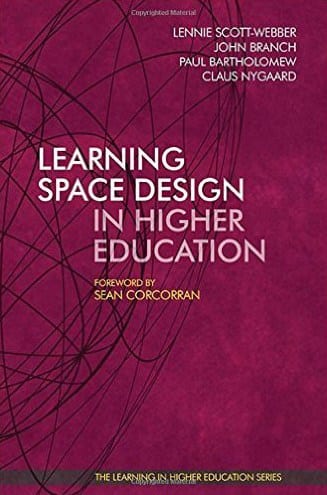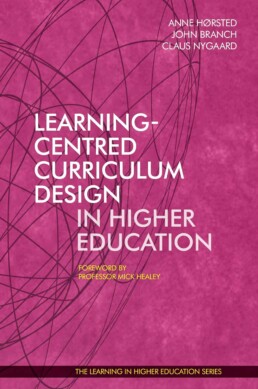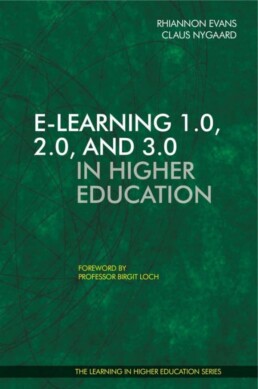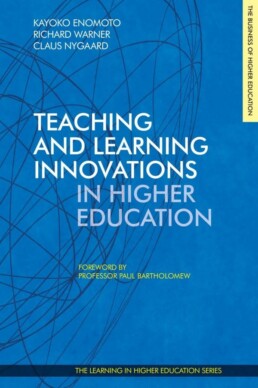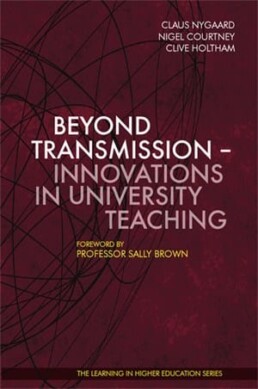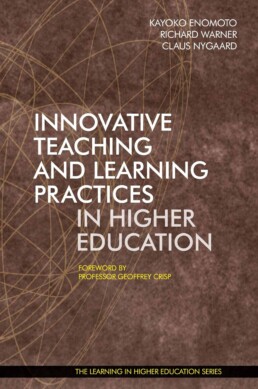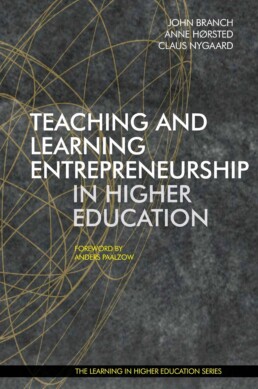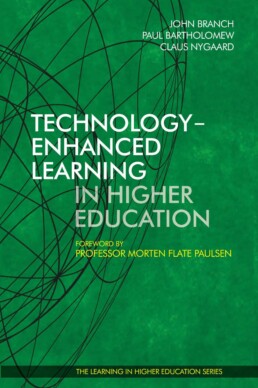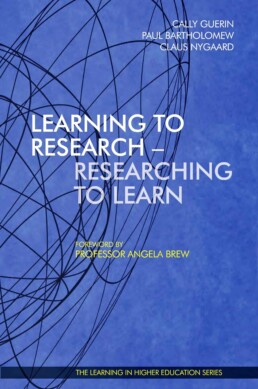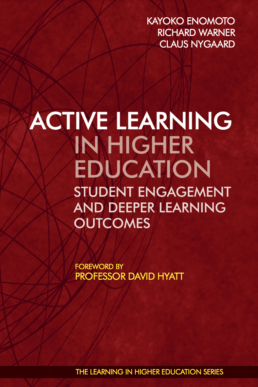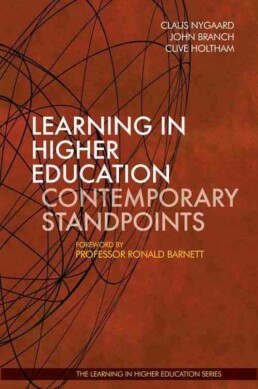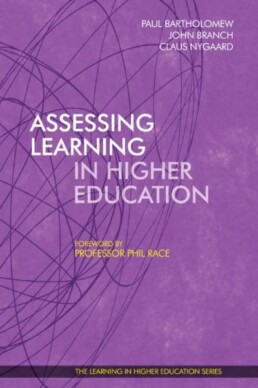Description
Learning Space Design in Higher Education
One of the most significant recent trends in Higher Education has been the move from focusing on teaching to one on learning. As anyone who has ever run programmes or courses will recognise, both the physical geography and the ethos of the location have major impacts on the quality of the resulting learning experience. Hence the current interest in Learning Space Design in Higher Education.
The fourteen chapters of this book, produced by the international Association Learning in Higher Education’s well-tested and rigorous methodology, discuss the concept of learning spaces, the pedagogy of learning spaces, and the way learning spaces are changing.
Learning Space Design indicates that the evolution of learning spaces is, and ought to be, a contested area that cannot be resolved just through a formal building commissioning process. It is important to make explicit the nexus between educational philosophy and architectural design of physical and/or virtual learning spaces, especially if the aim is to increase student agency, interaction, and collaboration.
Learning Space Design spotlights an important but often overlooked dimension of teaching and learning processes in higher education. It is a rallying call for a mission further to explore the nature and purposes of learning spaces. It should be essential reading for all those designing, delivering, or evaluating teaching and learning in higher education.
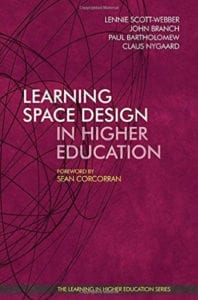
Pages: 320
Published: 2014
ISBN: 9781909818385
About the Editors
Lennie Scott-Webber is Director Education Environments of Steelcase Education Solutions at Steelcase Inc. in Grand Rapids, U.S.A. John Branch is Academic Director of the part-time MBA programmes and Lecturer of Marketing at the Stephen M. Ross School of Business, and Faculty Associate at the Center for Russian, East European, & European Studies of Michigan in Ann Arbor, U.S.A.Paul Bartholomew is Director of Learning Innovation and Professional Practice at Aston University in Birmingham, England. Claus Nygaard is executive director of LiHE and executive director of cph:learning.
Overview of the Book
Foreword by Sean Cocorran (pp. vii-xi).
Chapter 1: Practising Learning Space Design. By Lennie Scott-Webber, John Branch, Paul Bartholomew and Claus Nygaard (pp. 1-20).
Chapter 2: The Design of Distributed Learning Spaces. By Ieva Stupans (pp. 21-36).
Chapter 3: The Spaces of Relational Learning and their Impact on Student Engagement. By Jos Boys and Diane Hazlett (pp. 37-52).
Chapter 4: Enhancing Student Learning through the Management of Technology-rich Physical Learning Spaces for Flexible Teaching. By Jennifer Rowley (pp. 53-68).
Chapter 5: Social and Cognitive Affordances of Physical and Virtual Learning Spaces. By Nicola Bartholomew and Paul Bartholomew (pp. 69-86).
Chapter 6: Promoting Collaborative and Interdisciplinary Learning via Migration between different Learning Spaces. By Silke Lange and John R. A. Smith (pp. 87-106).
Chapter 7: Perceptions and Conceptions of Learning Spaces in Higher Education. By Steve Drew and Christopher Klopper (pp. 107-126).
Chapter 8: Promoting Student Reflection through Considerate Design of a Virtual Learning Space. By Kayoko Enomoto and Richard Warner (pp. 127-150).
Chapter 9: The Perfect Storm; Education’s Immediate Challenges. By Lennie Scott-Webber (pp. 151-168).
Chapter 10: Faculty Development: Precursor to Effective Student Engagement in the Higher Education Learning Space. By Gary M. Pavlechko and Kathleen L. Jacobi (pp. 169-190).
Chapter 11: Designing a Learning Space for Creativity and Collaboration: From Studio to Computer Lab in Design Education. By Ryan Daniel and Katja Fleischmann (pp. 191-208).
Chapter 12: The Active Agency of Learning Spaces. By Aileen Strickland (pp. 209-224).
Chapter 13: Collective Learning Spaces: Constraints on Pedagogic Excellence. By Clive Holtham and Annemarie Cancienne (pp. 225-240).
Chapter 14: The Doctoral Student-Supervisor Relationship as a Negotiated Learning Space. By B. Liezel Frick, Eva M. Brodin and Ruth M. Albertyn (pp. 241-262).
Chapter: 15 Using the Theory and Practice of ‘Built Pedagogy’ to Inform Learning Space Design. By Eva Dobozy (pp. 263-281).
Learning Space Design in Higher Education: a detailed description of the book chapters
In Chapter 2, Ieva Stupans explores learning design within a distributed learning space at an Australian university. The chapter begins by describing the Australian context of higher education concerning learning in the discipline of pharmacy. It then considers the affordances of online, face-to-face, and clinical placement learning. Finally, the chapter concludes with a case study of a programme that provides students with learning opportunities in a distributed learning space model. The key lesson from Chapter 2 is that through a detailed consideration of leaning design, programmes typically not available to students externally can be provided within a distributed learning space.
In chapter 3, Jos Boys and Diane Hazlett investigate the relationship between learning spaces and student engagement and belonging. The chapter begins by exploring how unpacking the idea of relational learning reveals verbal, non-verbal, and affective dimensions of student perceptions and experiences. It then outlines a framework for examining the space’s contribution to improving student engagement, based on case study evidence. Finally, the chapter suggests some important variables linking what matters about space and students’ feelings of belonging and identity. The key lesson from Chapter 3 is that a better understanding of relational learning and space interactions can improve student engagement.
In chapter 4, Jennifer Rowley raises awareness of the need to adapt curriculum and learning tasks to match the learning space. The chapter begins by looking at why a learning space is redesigned and why academics need to redesign the curriculum to become better teachers of students in the space. It then looks specifically at the effect that a new learning space had on students’ learning – specifically on the collaborative nature of learning and engaged inquiry. Finally, the chapter advocates for understanding the learning space and its impact on the learner and the need for curriculum remodelling to accommodate 21st-century learner needs. The key lesson from Chapter 4 is that the need exists for a match between curriculum, instruction, and space.
In chapter 5, Nicola Bartholomew and Paul Bartholomew explore the social and cognitive affordances of physical and virtual learning spaces and offer a case study of how this exploration has informed the redesign of space-use in an undergraduate diagnostic radiography programme. The chapter begins by identifying a problem context of teaching in a challenging physical space. It then explores theoretical perspectives relating to the use of physical and virtual learning spaces. Finally, the chapter concludes by showing how theoretical exploration has informed a solution to the introduction’s problem. The key lesson from Chapter 5 is that a hybrid learning space that embeds technology within a physical space can repurpose it, leading to new opportunities to enhance learning.
In chapter 6, Silke Lange and John R. A. Smith examine the impact of students and staff migration between learning environments and positions (teachers, researchers, and producers) on students’ learning experience. The chapter begins by distinguishing between physical (geographical), virtual (online), and conceptual (state of mind) learning spaces. It then describes Broad Vision, the art/science research and learning programme on which this chapter is based. Finally, the chapter discusses the emerging themes, reflecting on Broad Vision participants’ range of perspectives. The key lesson from Chapter 6 is that spaces will only become learning environments with suitable activities and when groups or individuals are in suitable conceptual spaces.
In chapter 7, Steve Drew and Christopher Klopper investigate the perceptions and conceptions of teaching and learning spaces in higher education. The chapter begins by developing a framework of contextual affordances of teaching and learning spaces. It then applies the framework to data collected through PRO teaching observations and from a survey of the teacher’s conceptions of teaching and learning spaces. Finally, the chapter concludes with a discussion of the heterogeneous disciplinary use of homogeneous learning spaces. The key lesson from Chapter 7 is that teaching and learning spaces moderate pedagogic practice.
In chapter 8, Kayoko Enomoto and Richard Warner inform the design and implementation of educational blogging as a reflective learning space. The chapter begins by conceptualising learning spaces and reviews the related literature on educational blogging for informing the design and implementation of reflective spaces. It then presents a study that explores blogs as a virtual learning space for developing both discipline-specific skills and reflection skills. It continues by describing two specific projects, using quantitative and qualitative data analyses, which research the effectiveness of the design and implementation of blogs as a learning space in a 3rd-year upper-level Japanese language course. Finally, the chapter concludes with key recommendations for creating a learning space for developing both discipline-specific and reflection skills through blogs. The key lesson from Chapter 8 is that a key element in a reflective blog learning space’s success lies in how appropriately and adequately blogging activities are scaffolded.
In chapter 9, Lennie Scott-Webber discusses the impact of change agents on higher education. The chapter highlights three change agents: 1. historical influences, 2. rate of technological change, and 3. the redesign of the classroom’s physical learning environment. It establishes a framework for conceptualising and examining what an active learning ecosystem might contain. Finally, the chapter provides insights from learning research and brain science on the learner, the learning process, and the learning place. The key lesson from Chapter 9 is that when change is disruptive and impacts existing norms, a robust decision model promoting inclusive decision-making across stakeholder constituencies is necessary.
In chapter 10, Gary M. Pavlechko and Kathleen L. Jacobi illustrate the need for – and provide an example of – an effective faculty development program for instructors selected to participate in the Interactive Learning Space Initiative at Ball State University. The chapter describes the physical remodel of two classroom spaces on the Ball State campus which required moving from traditional lecture-based teaching to an engaged learning environment. It then discusses the need to prepare a faculty member to assume a new role in higher education teaching and learning experience. Finally, the chapter proposes a faculty development model created to prepare faculty members before and during their time in the new learning space. The key lesson from Chapter 10 is that the preparation of faculty members, as they transition from traditional instructor to facilitator of learning, is necessary to change the teaching and learning culture across campus ultimately.
In chapter 11, Ryan Daniel and Katja Fleischmann explore the extent to which computer laboratories and other formal and informal learning spaces offer a viable alternative to the traditional design studio in supporting student learning and collaboration. The chapter begins by reviewing the literature on the design studio as a physical learning space and on the pedagogy of design education. It then reviews the main features of learning spaces that support successful cross-disciplinary and creative collaboration. The chapter continues by exploring the perspectives of undergraduate media design students on the effectiveness of various formal and informal learning spaces, including a specialist computer lab that was constructed to replace the traditional design studio. Finally, the chapter provides insights into which particular aspects of learning spaces students identify as most important in terms of supporting and enhancing their capacity to be creative. The key lesson from Chapter 11 is that pedagogies and learning spaces need to be adjusted and adapted to facilitate the different ways in which students collaborate, are creative, and learn, be this face to face on campus in computer labs or virtually.
In chapter 12, Aileen Strickland heightens awareness around the active agency of learning spaces in shaping our social systems. The chapter begins by reviewing the social theory of structuration, establishing the concept of spatial agency. It then discusses its relevance to education and the direct application to learning spaces. Finally, the chapter presents implications for theory and practice for educators and students operating in these environments and the designers designing them. The key lesson from Chapter 12 is that, by understanding that learning spaces have an active agency in the production of our social systems, we become empowered to see, act, and impart the values needed in the 21st century.
In chapter 13, Clive Holtham and Annemarie Cancienne explore the constraints on academic excellence, which can arise from collective learning spaces that are not owned by any discipline. The chapter begins by considering theory, highlighting the different perspectives of designers, everyday users, and proactive users of learning spaces. It then compares that theory to experience in a single institution. Finally, the chapter reviews the implications for the process of learning space design. The key lesson from Chapter 13 is that the evolution of learning spaces is, and ought to be, a contested area that cannot be resolved only through a formal building commissioning process.
In chapter 14, Liezel B. Frick, Eva M. Brodin and Ruth M. Albertyn propose the relationship between doctoral supervisors and students as a co-constructed negotiated learning space. The chapter begins by exploring the unique nature and challenges of the student-supervisor relationship in the context of the doctoral learning space, arguing that both doctoral supervisors and students take part in negotiating their relationship. Still, supervisors often take the lead in establishing this relationship, which forms the foundation of the learning space created. It then uses transactional analysis theory as a point of departure from which possible identity positions are construed, leading to either negotiated or non-negotiated learning spaces. Finally, the chapter offers a framework for conceptualising the doctoral learning space and for characterising the main elements in the doctoral supervisor-student relationship. The key lesson from Chapter 14 is that students and supervisors need to understand their identity positions and their implications if they want to negotiate a constructive and productive learning space.
In chapter 15, Eva Dobozy explores the concept of ‘built pedagogy’ from theoretical and practical viewpoints. The chapter introduces the concept of ‘built pedagogy’, linking it to the development of learners’ 21st-century competencies. It then discusses the concept of formal, non-formal and informal learning from Bourdieu’s dispositional theory of action. It connects learning to learner agency and decision-making power. It continues with a real-world case example from a teacher education program at an Australian university that illustrates how the traditionally disparate learning spaces have been re-conceptualised to facilitate border-crossing and learner agency ideas. Finally, it outlines some implications for future designs of the continuum from physical to virtual learning spaces design, focusing on the need to plan for non-formal learning and for the design of social learning spaces. The key lesson from Chapter 15 is that there is a need to make explicit the nexus between educational philosophy and architectural design of physical and/or virtual learning spaces, especially if the aim is to increase student agency, interaction, and collaboration.
Other chapters on learning-space design
You may be interested in reading the book Teaching and Learning Innovations in Higher Education, which has a section devoted to learning space design in higher education.

